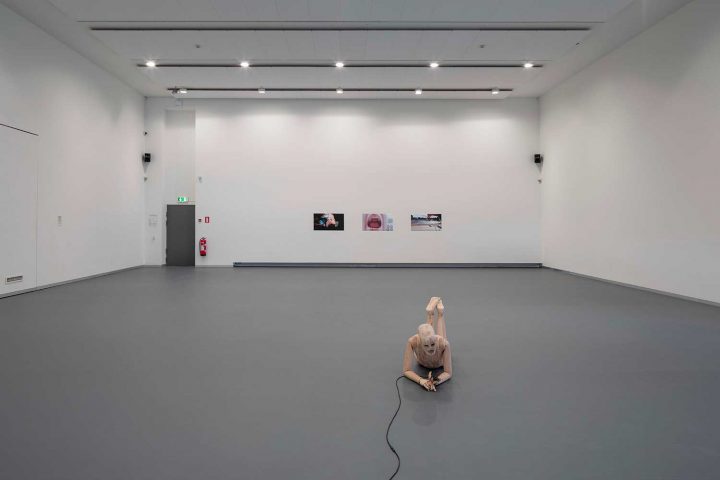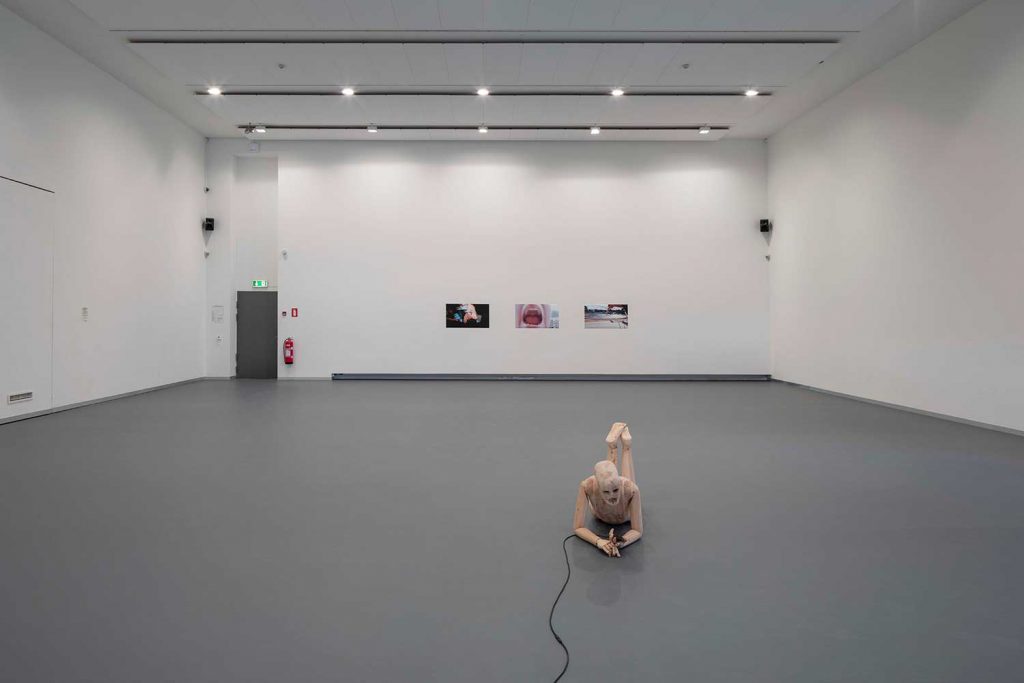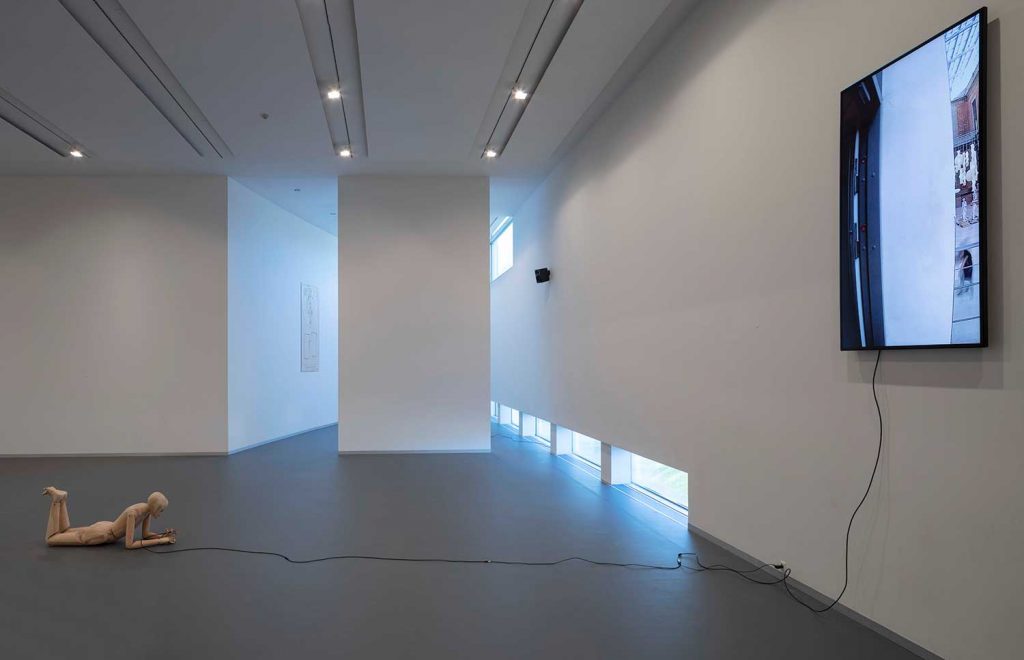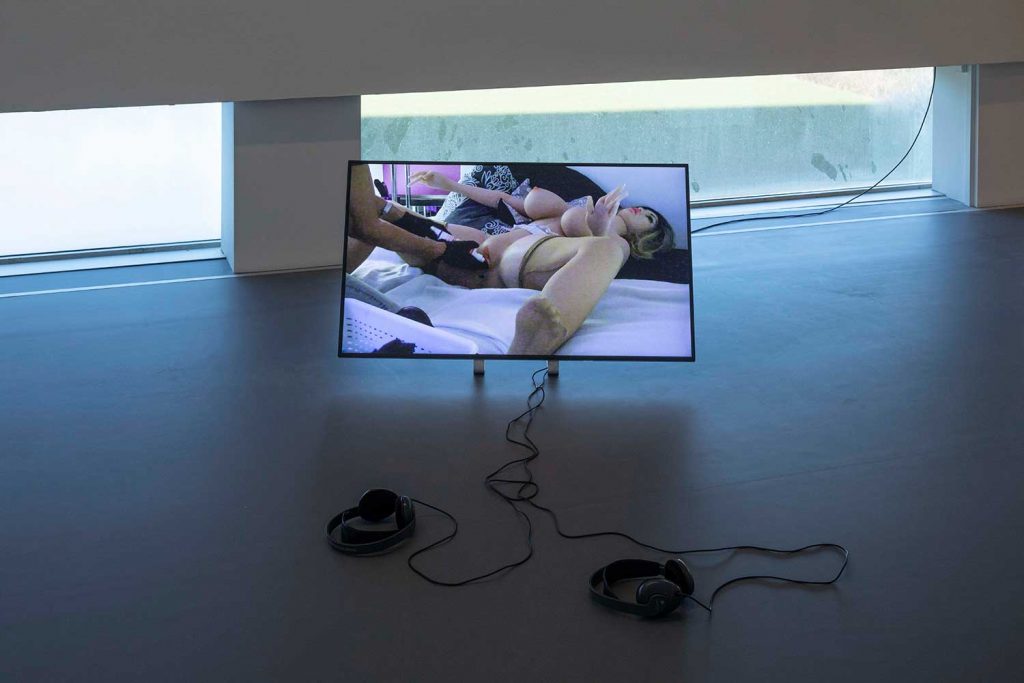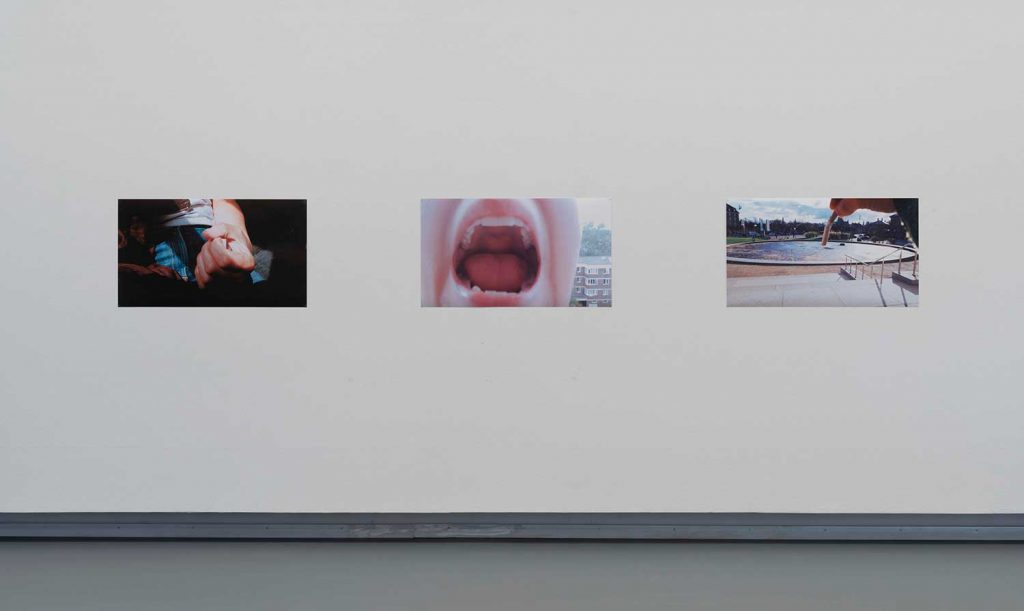The last of the trilogy of exhibitions presented under the rubric “PRE-ORDER I–III,” the first mounted at Kunsthal Aarhus in 2018 and the second at KW Institute for Contemporary Art Berlin, this solo presentation at SMK continues Sidsel Meineche Hansen’s investigation into the commodification of subjectivity and desire within the sex trade and art market.
Access to the exhibition is monitored by an intercom system. When the buzzer is pressed, a voice asks a question — “Are you difficult to work with?” — which triggers the door to open and a video animation to begin playing on a wall-mounted flat-screen monitor facing the entrance. The video runs simultaneously on an iOS device placed in the hand of a life-size wooden mannequin reclining on the floor. Seemingly absorbed by the images, the mannequin’s eyes and mouth are just hollow cavities, its orifices created to be compatible with silicone oral and vaginal inserts for commercially available sex dolls.
A talking head avatar crudely assembled from a 3-D scan of the mannequin and the artist’s facial features delivers a monologue on the inner conflict faced by artists within a professionalized and commercially exploitative art system. The monologue for An Artist’s Guide to Stop Being an Artist (2019) is ironically appropriated from the self-help guide Allen Carr’s Easy Way to Stop Smoking. Hansen’s provocative recommendation that artists be “difficult to work with” questions the role of desire within the mechanisms that define artistic work outside of remunerated labor.
The video Maintenancer (2018), made in collaboration with Therese Henningsen, is shown in the second gallery. It is a documentary shot at a German doll brothel, and follows a former elderly care worker as she carries out a meticulous maintenance routine to disinfect and restore first-generation life-size “robots” after client use. There is an element of dedication and care in the act of repair: the silicone dolls, slumped on unmade beds, their inanimate bodies defiled, are manipulated and made again lifelike through the careful application of make-up to their exaggeratedly sexualized intimate parts.
The avatar, the ball-jointed wooden mannequin, and the silicone doll all stand as empty vessels, passive recipients used to replace the body of the artist to expose the dynamics of exploitative desire within the cultural sector and sex industry alike. Representing the artist by absenting the subject, Hansen creates an exhibition that is restrained and ungiving. This resistance, however, is what forces us to question the relations of power inherent to the contemporary conditions of artistic activity.

